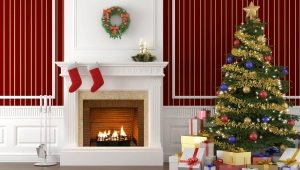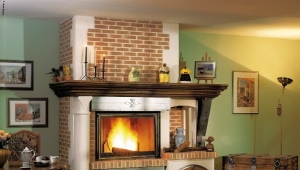Decorative moldings for fireplaces
To date, fireplaces are fashionable decorations for various interiors: ranging from classic to unusual modern style. Such models combine beauty and functionality, which attracts the attention of many buyers. Special attention during the choice of the fireplace is paid not only to the internal filling, but also to the external design. One of the popular options are designs decorated with stucco.
Special features
Decorative stucco for decorating the fireplace has been used since ancient times, when these designs were used as a luxury item. Foci were for many an indicator that homeowners have high status and income, and therefore can afford such decorations. Special attention has always been paid to the design of the fireplace. To create designs in the classical style used expensive materials and stucco - a sophisticated and pronounced element in the design.
Often, similar design options can be found in modern homes. Fireplaces used in the interior, complement the figures and patterns with embossed details. To create such elements used several ways.
The peculiarity of stucco is that it is made both in production and at home. To create patterns yourself, you need to spend a little time and effort.
The main advantages of stucco can be attributed:
- good appearance;
- the perfect complement to the classic style;
- there is an opportunity to independently make different shapes and patterns to taste.
As for the choice of stucco, in this matter you need to focus on the type of fuel in the base. Most often, such patterns are decorated with modern electrical options. For decoration of traditional fireplaces with a chimney you need to use sustainable materials, as carbon or soot may appear over time.
Materials
If you decide to decorate the portal of the fireplace with stucco, special attention should be paid to the choice of material. To date, there are several popular options that are used to decorate designs.All species have good performance and are perfectly treatable.
- Polyurethane. This material belongs to synthetic species, but according to the manufacturers themselves, it is absolutely harmless. It is worth noting that polyurethane has a lot of positive operational qualities, which make it so popular in the construction industry. Constructions and elements created from it are lightweight. Polyurethane surfaces are resistant to mechanical stress.
The important point is that the material is not afraid of exposure to moisture and temperature extremes. Creating patterns of polyurethane you can not worry about the fact that there will be pores on the surface.
- Gypsum. The best option to create stucco for the fireplace. The material is quite malleable to processing, takes any form, which allows it to be used for the manufacture of small elements. Gypsum is ideal for work in the event that you decide to create stucco independently.
The main advantage of the material in comparison with other species is that it has refractory qualities.That is why gypsum is often used to decorate not only electric, but also traditional fireplaces.
- Styrofoam. Basically, this material is rarely used to create stucco. It can be used in the work, but requires careful processing to avoid deformation or more serious consequences. Polyfoam is suitable for the manufacture of large parts. But It is worth noting that the material does not have high refractory performance.
- Concrete. This material is the most stable and durable in comparison with the previous versions. With proper processing, a variety of elements and details can be created from concrete. The material is perfectly amenable to finishing, it can be decorated with many patterns to enhance the aesthetic qualities. He is not afraid of exposure to high temperature and moisture, which belongs to the advantages of this type.
Installation Recommendations
If you decide to create a stucco with your own hands, you need to follow a few important rules. First, prepare a sketch on paper, as this will help speed up the manufacturing process. In the work you will be able to navigate the scheme. Indicate the dimensions of the elements, shape and location.
After that, you need to prepare the surface with which you intend to work. It needs to be carefully leveled, previously cleaned of dirt. Using special tools for work, begin to create stucco. You can fix the patterns with glue or cement.
For fixing stucco often use nails and screws. The advantage of these options is that the elements will hold securely and for a long time.






















































